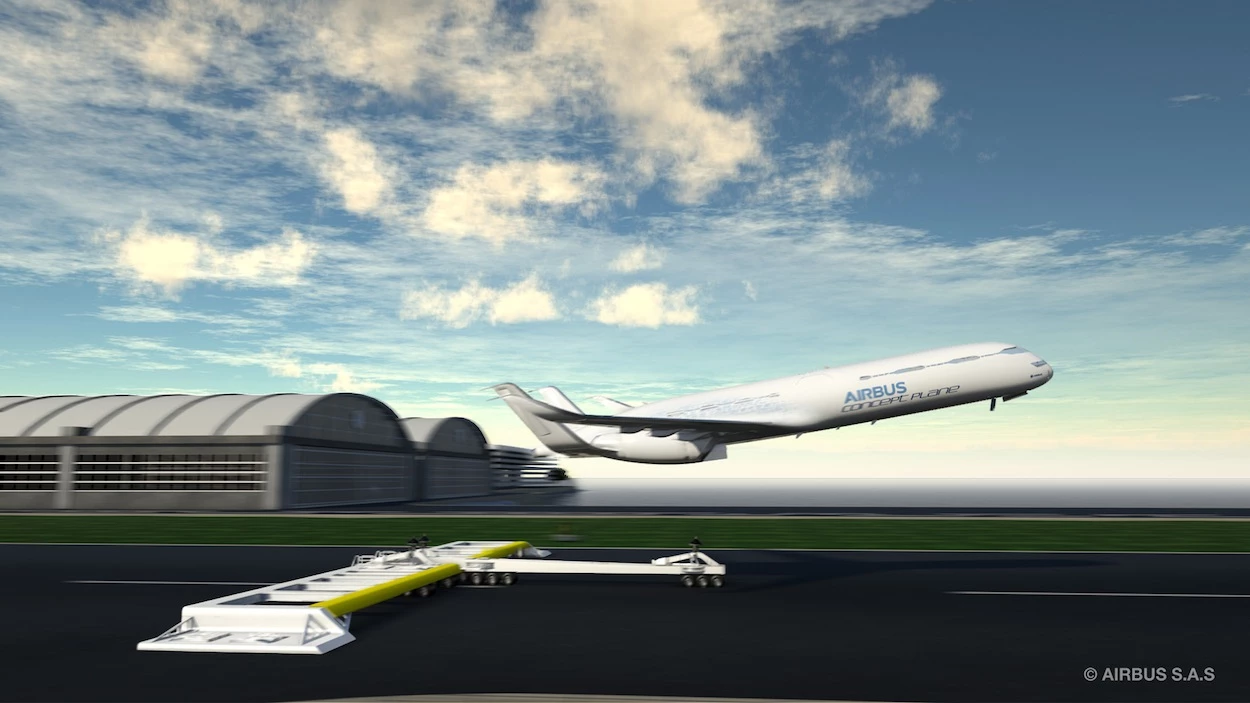A new report drafted by Airbus as part of its “Smarter Skies” initiative sees the aircraft manufacturing company looking toward 2050 and beyond, in order to consider what can be done to meet the expected growth in future air travel sustainably. The ambitious plans put forward include assisted take-off, free-glide landings, and aircraft flying in formation.
In the report, Airbus explains that the initial power required for a passenger plane to take-off is only needed for a brief part of the total flight. This therefore poses an opportunity for a ground-based device to provide the propulsion needed and free the plane of its additional burden. With this in mind, the engineers at Airbus came up with an idea dubbed "eco-climb" which appears to draw inspiration from the catapult-assisted take-off system utilized on aircraft carriers.
Airbus envisages the eco-climb system moving into position automatically and assisting passenger planes to take-off on shorter runways, with the benefit of a more rapid climb enabling aircraft to reach efficient cruising altitude quicker than before. A key concern in implementing such a design rests in keeping g-force within acceptable levels, and one can imagine such a system requiring ample stores of on-board sick bags.

Perhaps more practical for the somewhat near future, are the company's thoughts on landing more economically. Airbus promoted the benefits of a free-glide approach to airports, which could reduce emissions during the overall descent and limit noise too, as there would be no need for engine thrust or air breaking. However, even this idea would face a challenge to surmount current safety regulations.
Another possibility put forward concerns flying multiple aircraft in "express skyways," with the use of highly sophisticated and automated aircraft navigation systems to bring passenger planes to within 20 wingspans of each other – much less than the four nautical miles which separates civil aircraft today, but still technically feasible. Just like migratory birds and military aircraft, commercial aircraft flying in a V formation would benefit from reduced drag due to the upwash from the wingtip vortices of the preceding aircraft, resulting in greater fuel efficiency.
Airbus also states that by further optimizing Air Traffic Management (ATM) systems and making better use of existing aircraft capabilities, changes in infrastructure and organization, could help reduce traffic congestion and delays, while more direct routes could cut travel times.
The company claims that flights in Europe and the U.S. could be around 13 minutes shorter on average, and flights in other parts of the world could be shorter too. Working on the assumption of approximately 30 million flights per year, the Airbus engineers worked out that such optimization could save around nine million tons of excess fuel annually, equating to over 28 million tons of avoidable CO2 emissions and a saving of five million hours of excess flight time.
While some of the plans cited in the Smarter Skies report will not be attainable for some time, if ever, optimization of existing technologies is something that could provide benefits to airlines and passengers in the near future.
Source: Airbus via The Register










